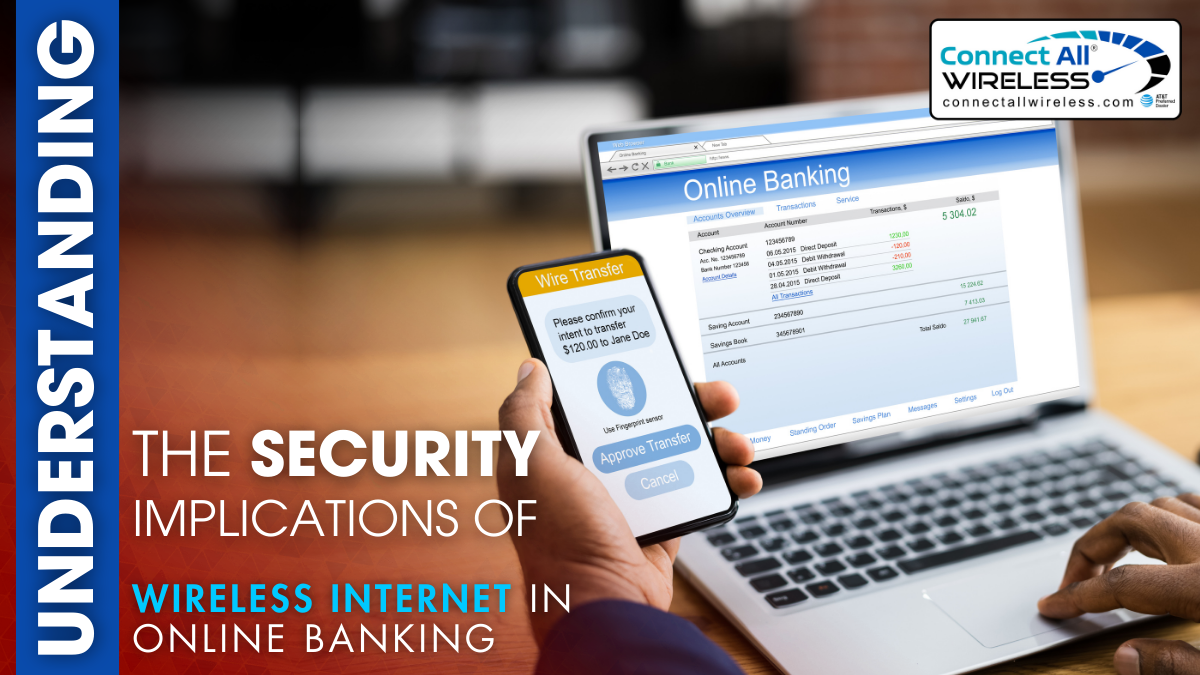In the digital age, convenience often comes hand in hand with risk, especially when it involves sensitive financial transactions. With the widespread use of wireless internet, online banking has become a cornerstone of modern finance. However, along with the convenience of banking from anywhere comes the imperative need to understand the security implications inherent in utilizing wireless networks for financial transactions.
The Rise of Online Banking:
Online banking has revolutionized the way we manage our finances. Gone are the days of long queues at the bank; now, with just a few clicks or taps, we can transfer funds, pay bills, and monitor our accounts from the comfort of our homes or on the go. This convenience has significantly enhanced our financial lives but has also brought forth new challenges, particularly in terms of security.
Wireless Internet and Its Vulnerabilities:
Wireless internet, while incredibly convenient, is not without its vulnerabilities. Unlike wired connections, wireless networks transmit data through the air, making them susceptible to interception by malicious actors. This vulnerability is compounded by the prevalence of public Wi-Fi hotspots in cafes, airports, and other public places. These networks are often unsecured, leaving users' data exposed to potential cyber threats.
Security Risks in Online Banking:
When it comes to online banking, security is paramount. Any breach of security can result in unauthorized access to sensitive financial information, leading to identity theft, fraud, and financial loss. Several security risks are associated with using wireless internet for online banking:
-
Man-in-the-Middle Attacks: In this type of attack, a hacker intercepts communication between the user and the banking server, allowing them to eavesdrop on sensitive information such as login credentials and account numbers.
-
Wi-Fi Sniffing: Cybercriminals can use specialized software to capture data transmitted over a Wi-Fi network, including usernames, passwords, and account details.
-
Rogue Hotspots: Malicious actors may set up rogue Wi-Fi hotspots with names similar to legitimate ones, tricking users into connecting to them and unwittingly exposing their data to the attacker.
-
Phishing: Attackers often use phishing emails or fake websites to trick users into divulging their login credentials or other sensitive information. When banking over a wireless connection, users may be more susceptible to falling victim to these scams.
Mitigating the Risks:
While the risks associated with wireless internet in online banking are real, there are steps that users can take to mitigate them and ensure the security of their financial transactions:
-
Use Secure Networks: Whenever possible, avoid conducting online banking transactions over public Wi-Fi networks. Instead, use a secure, password-protected Wi-Fi network at home or consider using a virtual private network (VPN) for added security.
-
Enable Two-Factor Authentication: Many banks offer two-factor authentication, which adds an extra layer of security by requiring a second form of verification, such as a code sent to your mobile device, in addition to your password.
-
Keep Software Updated: Ensure that your operating system, web browser, and antivirus software are up to date with the latest security patches to protect against known vulnerabilities.
-
Beware of Phishing Attempts: Be cautious of unsolicited emails or messages asking for your banking credentials, and never click on links or download attachments from unknown sources.
-
Monitor Your Accounts: Regularly review your bank statements and account activity for any unauthorized transactions, and report any suspicious activity to your bank immediately.
Conclusion:
In conclusion, comprehending the security implications of utilizing wireless internet in online banking is imperative for safeguarding one's financial well-being. While the convenience of online banking is undeniable, the risks associated with insecure wireless networks cannot be ignored.
By prioritizing security measures such as avoiding public Wi-Fi networks, enabling two-factor authentication, keeping software updated, staying vigilant against phishing attempts, and monitoring account activity, individuals can minimize the likelihood of falling victim to cyber threats. Moreover, for residents of Michigan seeking the best wireless internet options, prioritizing security features such as encryption protocols, network reliability, and customer support can enhance online banking security.
Ultimately, with awareness, caution, and the adoption of best practices, individuals can confidently navigate the digital landscape of online banking while mitigating potential security risks associated with wireless internet connectivity.

